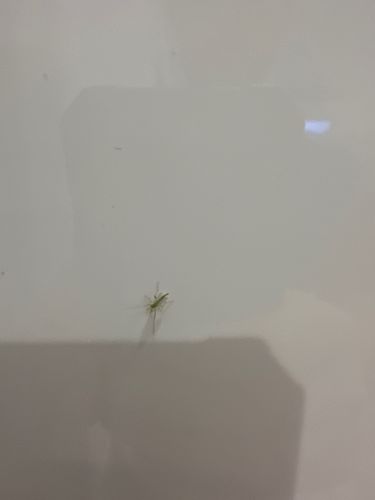Mosquito (likely a male based on visible feathery antennae, though specific identification is difficult from this image)
Scientific Name: Culicidae (family) - exact genus/species not determinable from image
Order & Family: Order: Diptera, Family: Culicidae
Size: 3 mm to 10 mm (0.12 to 0.4 inches) in length

Natural Habitat
Mosquitoes typically inhabit areas with standing water, which is essential for laying eggs and larval development. Adults are found near these breeding sites, often in vegetated areas, forests, swamps, and even urban environments where artificial containers collect water.
Diet & Feeding
Adult male mosquitoes feed exclusively on nectar and plant juices. Adult female mosquitoes also feed on nectar for energy but require a blood meal for egg development.
Behavior Patterns
Mosquitoes are most active during dusk and dawn, though some species bite during the day. They are attracted to carbon dioxide, body heat, and certain chemicals emitted by hosts. Males do not bite. They undergo complete metamorphosis with four life stages: egg, larva, pupa, and adult.
Risks & Benefits
Risks: Female mosquitoes are vectors for numerous diseases including Malaria, Dengue fever, Zika virus, West Nile virus, and Chikungunya. Their bites can also cause itchy welts. Benefits: Mosquitoes play a role in the ecosystem as a food source for various animals (birds, bats, fish, other insects) and as pollinators (males and females feed on nectar).
Identified on: 10/4/2025